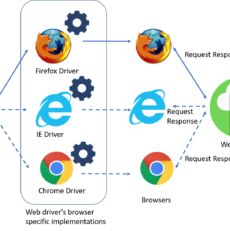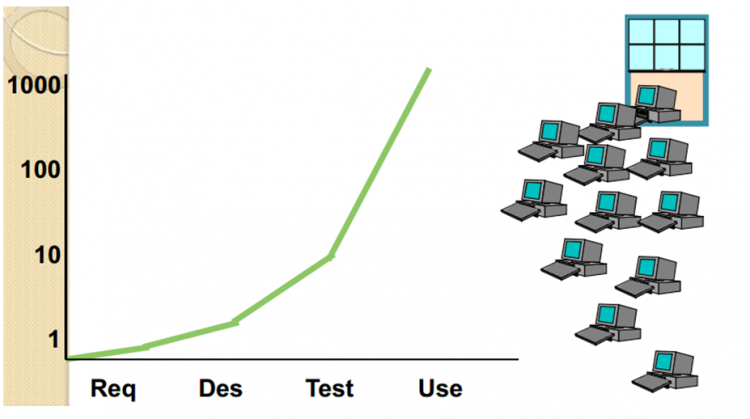
2023-02-13
KHOÁ HỌC AUTOMATION TEST CHO WEBSITE- sử dụng Selenium WebDriver với Java Basic To Advanced
0986775464

Question 21 What is the purpose of confirmation testing?
a. To confirm the users’ confidence that the system will meet their business needs.
b. To confirm that a defect has been fixed correctly.
c. To confirm that no unexpected changes have been introduced or uncovered as a result of changes made.
d. To confirm that the detailed logic of a component conforms to its specification.
Question 22 Which success factors are required for good tool support within an organization?
a. Acquiring the best tool and ensuring that all testers use it.
b. Adapting processes to fit with the use of the tool and monitoring tool use and benefits.
c. Setting ambitious objectives for tool benefits and aggressive deadlines for achieving them.
d. Adopting practices from other successful organizations and ensuring that initial ways of using the tool are maintained.
Question 23 Which of the following best describes integration testing?
a. Testing performed to expose faults in the interfaces and in the interaction between integrated components.
b. Testing to verify that a component is ready for integration.
c. Testing to verify that the test environment can be integrated with the product.
d. Integration of automated software test suites with the product.
Question 24 According to the ISTQB Glossary, debugging:
a. Is part of the fundamental testing process.
b. Includes the repair of the cause of a failure.
c. Involves intentionally adding known defects.
d. Follows the steps of a test procedure.
Question 25 Which of the following could be a root cause of a defect in financial software in
which an incorrect interest rate is calculated?
a. Insufficient funds were available to pay the interest rate calculated.
b. Insufficient calculations of compound interest were included.
c. Insufficient training was given to the developers concerning compound interest calculation rules.
d. Inaccurate calculators were used to calculate the expected results.
Question 26 Assume postal rates for ‘light letters’ are:
$0.25 up to 10 grams; $0.35 up to 50 grams; $0.45 up to 75 grams; $0.55 up to 100 grams.
Which test inputs (in grams) would be selected using boundary value analysis?
a. 0,9,19,49,50,74,75, 99,100
b. 10,50,75,100,250,1000
c. 0,1,10,11,50,51,75,76,100,101
d. 25,26,35,36,45,46,55,56
Question 27 Consider the following decision table.
http://prntscr.com/f97sue
Given this decision table, what is the expected result for the following test cases?
TCI: A 26-year-old on business but with violations or accidents on his driving record
TC2: A 62-year-old tourist
a. TCI: Don’t supply car; TC2: Supply car with premium charge.
b. TCI: Supply car with premium charge; TC2: Supply car with no premium charge.
c. TCI: Don’t supply car; TC2: Supply car with no premium charge.
d. TCI: Supply car with premium charge; TC2: Don’t supply car.
with a clean driving record
Question 28. What is exploratory testing?
a. The process of anticipating or guessing where defects might occur.
b. A systematic approach to identifying specific equivalent classes of input.
c. The testing carried out by a chartered engineer.
d. Concurrent test design, test execution, test logging and learning.
Question 29. What does it mean if a set of tests has achieved 90% statement coverage?
a. 9 out of 10 decision outcomes have been exercised by this set of tests.
b. 9 out of 10 statements have been exercised by this set of tests.
c. 9 out of 10 tests have been run on this set of software.
d. 9 out of 10 requirements statements about the software are correct.
Question 30. A test plan is written specifically to describe a level of testing where the primary goal is establishing confidence in the system. Which of the following is a likely name for this document?
a. Master test plan
b. System test plan
c. Acceptance test plan
d. Project plan
Question 31 Why is testing necessary?
n. Because software is likely to have faults
o. To learn about the reliability of the software
p. To fill the time between delivery of the software and the release date
q. To prove that the software has no faults
r. Because testing is included in the project plan
s. Because failures can be very expensive
t. To avoid being sued by customers
u. To stay in business
a. n, o, s,t,u are true, p,q,r are false
b. n, o are true, s,t,u, p,q,r are false
c. n, p,s,t,u are true, o,q,r are false
d. n,o,s are true, p,q,r,t,u are faules
Question 32 What is the best description of static analysis?
a. The analysis of batch programs
b. The reviewing of test plans
c. The analysis of program code or other software artifacts
d. The use of black-box testing
Question 33 System test execution on a project is planned for eight weeks. After a week of testing, a
tester suggests that the test objective stated in the test plan of ‘finding as many defects as possible during system test’ might be more closely met by redirecting the test effort according to which test principle?
a. Impossibility of exhaustive testing.
b. Importance of early testing.
c. The absence of errors fallacy.
d. Defect clustering.
Question 34 Consider the following activities that might relate to configuration management:
I Identify and document the characteristics of a test item
II Control changes to the characteristics of a test item
III Check a test item for defects introduced by a change
IV Record and report the status of changes to test items
V Confirm that changes to a test item fixed a defect.
Which of the following statements is true?
a. Only I is a configuration management task.
b. All are configuration management tasks.
c. I, II and III are configuration management tasks.
d. I, II and IV are configuration management tasks.
Question 35 Consider the following state transition diagram.
http://prntscr.com/f97shg
Given this diagram, which test case below covers every valid transition?
a. SS-S1-S2-S4-S1-S3-ES
b. SS-S1-S2-S3-S4-S3-S4-ES
c. SS-S1-S2-S4-S1-S3-S4-S1-S3-ES
d. SS-S1-S4-S2-S1-S3-ES
Question 36 A test plan included the following clauses among the exit criteria:
• System test shall continue until all significant product risks have been covered to the extent specified in the product risk analysis document.
• System test shall continue until no must-fix defects remain against any significant product risks
specified in the product risk analysis document.
During test execution, the test team detects 430 must-fix defects prior to release and all must-fix defects are resolved. After release, the customers find 212 new defects, none of which were detected during testing. This means that only 67% of the important defects were found prior to release, a percentage which is well below average in your industry. You are asked to find the root cause for the high number of field failures. Consider the following list of explanations:
I Not all the tests planned for the significant product risks were executed.
II The organization has unrealistic expectations of the percentage of defects that testing can find.
III A version-control issue has resulted in the release of a version of the software that was used during early testing.
IV The product risk analysis failed to identify all the important risks from a customer point of view.
V The product risk analysis was not updated during the project as new information became available.
Which of the following statements indicate which explanations are possible root causes?
a. II, III and IV are possible explanations, but I and V are not possible.
b. All five are possible explanations.
c. I, IV and V are possible explanations, but II and III are not possible.
d. Ill, IV and V are possible explanations, but I and II are not possible.
Question 37 What is the most important factor for successful performance of reviews?
a. A separate scribe during the logging meeting
b. Trained participants and review leaders
c. The availability of tools to support the review process
d. A reviewed test plan
Question 38 Consider the following statements about maintenance testing:
I It requires both re-test and regression test and may require additional new tests.
II It is testing to show how easy it will be to maintain the system.
III It is difficult to scope and therefore needs careful risk and impact analysis.
IV It need not be done for emergency bug fixes. Which of the statements are true?
a. I and III
b. I and IV
c. II and III
d. II and IV
Question 39 Which two specification-based testing techniques are most closely related to each other?
a. Decision tables and state transition testing
b. Equivalence partitioning and state transition testing
c. Decision tables and boundary value analysis
d. Equivalence partitioning and boundary value analysis
Question 40 Which of the following is an advantage of independent testing?
a. Independent testers don’t have to spend time communicating with the project team.
b. Programmers can stop worrying about the quality of their work and focus on producing more code.
c. The others on a project can pressure the independent testers to accelerate testing at the end of the schedule.
d. Independent testers sometimes question the assumptions behind requirements, designs and
implementations.
Ngoài ra bạn có thể download nhiều tài liệu hay khác về testing theo link sau: http://bit.ly/2r3szBD
2 thoughts on “Bộ đề ôn luyện thi ISTQB foundation sát với Syllabus và đề thi thật- phần 2”
Tram Hoang
2018-07-11 at 10:53 am
Anh/Chị cho em xin đáp án được không ạ?
admin
2018-08-21 at 11:55 am
QRS hiện đưa hết đề thi lên trang online và có sẵn đáp án rồi bạn nhé